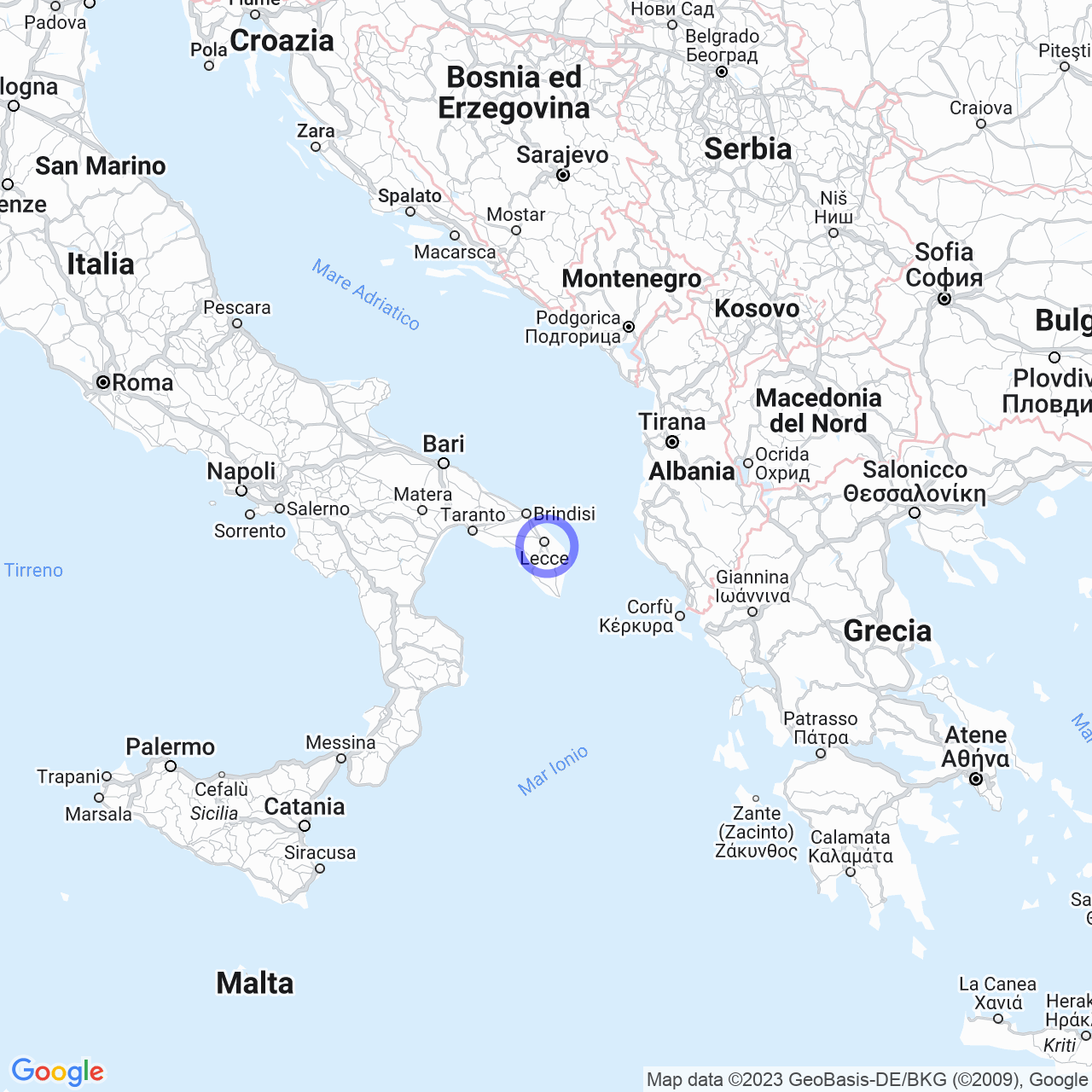Cavallino
Cavallino: a small town in Puglia
Cavallino (''Caḍḍrinu'' in Salentino dialect) is a municipality in the district of Lecce, in Puglia, with a population of about 12,800 inhabitants. Located in Salento, south of Lecce, with which it shares a border, it is an important historical and cultural center. Its geographical position and numerous archaeological testimonies of the Messapic city have made it a highly appreciated tourist destination over the years, both by residents and visitors.

The physical geography of Cavallino
The territory
The territory of Cavallino covers an area of 22.34 km² and is predominantly flat. The urban center is located about 7 km from the center of Lecce, while the fraction of Castromediano, completely included in the urban fabric of the city, is part of the municipality. The minimum height of the municipality is 32 meters, while the maximum reaches 86 meters above sea level. The municipality borders Lecce to the north, Lizzanello to the east, Caprarica di Lecce and San Donato di Lecce to the south, and San Cesario di Lecce to the west.
The climate
The climate of Cavallino is Mediterranean, with mild winters and hot and humid summers. The average temperature of the coldest month, January, is around +9°C, while that of the hottest month, August, is around +24.7°C. The municipality is subject to frequent rains in autumn and winter, reaching around 626 mm of rain per year, while spring and summer are characterized by periods of drought. Wind is very influential, especially from the Balkan winds or hot African currents.
The origins of Cavallino's name
The origin of Cavallino's name is still uncertain today, but there are several theories about it. It is believed that the toponym derives from the Greek root "kàbas," which means the body of guards for the collection of customs duties (an ancient economic practice), while another theory suggests that the name derives from the Latin term "caballus," which indicated the horses of the Roman army. The horse is also present in the municipal coat of arms, but it is assumed to refer to the white horse, which according to the tradition of Cavallino was a symbol of strength and courage.
The history of Cavallino
Cavallino is a very old city, inhabited since the Bronze Age. It was an important Messapic center that reached its heyday in the 6th century BC with the construction of a grand urban layout. However, the Messapic inhabitants were destroyed around 470 BC by the Greek populations of Taranto. Some testimonies, such as some Specchia (megaliths), the city's boundary walls, and some tombs, remain from the archaic and Messapic period. In the Middle Ages, Cavallino was raided by the Saracens, and in the 16th century, it was part of the Kingdom of Naples. During the 19th century, the town experienced a period of development thanks to the reclamation of the countryside and the birth of the first industries and crafts.
The modernity of Cavallino
Today, Cavallino is a modern city with an important historical and cultural heritage. The old town preserves numerous architectural testimonies such as the Churches of San Felice, Sant'Agata, and San Rocco, the Clock Tower, and the Ducal Palace, the seat of the City Hall. Numerous cultural and entertainment activities take place in the municipality during the year, such as the patronal feast of San Rocco, the San Martino Fair, and the historical reenactment "Liberazione del Grano."
In addition, the municipality values and promotes local food and wine products based on typical products such as oil, wine, and cheeses, organizing events and exhibitions such as "Cavallino Wine Festival" and "Le Ricette di Nonna Maria."
In conclusion, Cavallino is a Puglian municipality that has evolved over time while maintaining a strong historical and cultural identity. We are happy to present you this splendid place and to have given you some more information about its history, attractions, and peculiarities. If you have the opportunity, we recommend visiting it and discovering all that it has to offer.
